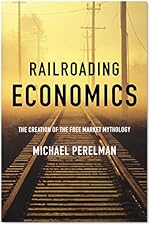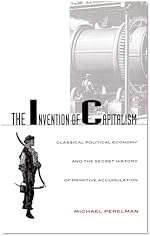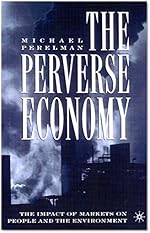A Different Environmental Threat: Peak Rare Minerals, China, and Green Technology
One of the keys to Green Technology may be buried in China. It has only recently begun to appear in the media, but for very different reasons. A couple of years ago, the New Scientist published a piece about the risks of the scarcity of rare minerals.
Cohen, David. 2007. “Earth’s Natural Wealth: An Audit.” New Scientist Issue 2605 (23 May): pp. 35-41.
Three facts are bringing this looming shortage to the attention of mainstream media. First, the US is dependent on exports of these minerals, while China is the main exporter. Second, these minerals are crucial for high technology, including both military and so-called Green Technologies.
My next encounter with the rare earth problem came in David Cay Johnston’s wonderful book. Here are my notes:
Johnston, David Cay. 2007. Free Lunch: How The Wealthiest Americans Enrich Themselves at Government Expense (And Stick You With The Bill) (New York: Portfolio).
37: “In 1982, competing groups of scientists around the world found a way to combine iron and boron with a somewhat rare earth called neodymium to make extremely powerful and lightweight magnets. These magnets quickly found a market in computer hard drives, high-quality microphones and speakers, automobile starter motors, and the guidance systems of smart bombs.”
38: “General Motors created a division to manufacture these magnets, calling it Magnequench …. Then in 1995 the automaker decided to sell the division. Because the deal was for only $70 million it attracted little attention. The buyer was a consortium of three firms …. but the real parties behind the purchase were a pair of Chinese companies — San Huan New Material High-Tech Inc. and China National Nonferrous Metals. Both firms were partly owned by the Chinese government. The heads of these two Chinese companies are the husbands of the first and second daughters of Deng Xiaoping, then the paramount leader.”
38: At the time, GM was trying to get a toehold in China. One of the Goddard’s was at the time vice minister of the Chinese State Science and Technology Commission, which had the responsibility for acquiring military technology by any means.
39: The Clinton administration agreed the sale under the condition that the new owners keep the production and technology in the United States. The new owners began to buy factories in the United States including GA Powders, an Idaho firm that used government money to develop a monopoly on the production powerful methods. Then the Chinese company shut down American production and moved everything to China.
The reference to Deng is interesting, as you will see in a moment.
In any case, Clinton agreed to give China access to this high technology so that GM could peddle its low technology.
According to Keith Bradsher in the New York Times “A single mine in Baotou, in China’s Inner Mongolia, produces half of the world’s rare earths. Much of the rest — particularly some of the rarest elements most needed for products from wind turbines to Prius cars — comes from small, often unlicensed mines in southern China. China produces over 99 percent of dysprosium and terbium and 95 percent of neodymium. These are vital to many green energy technologies, including high-strength, lightweight magnets used in wind turbines, as well as military applications.”
Bradsher, Keith. 2009. “China Tightens Grip on Rare Minerals.” New York Times (31 August): p. B 1.http://www.nytimes.com/2009/09/01/business/global/01minerals.html?scp=1&sq=terbium&st=Search
The Prius uses a battery built around the technology that GM was developing. The Wall Street Journal reported:
“The Prius, according to a report by commodities consultant Jack Lifton, uses at least 12 kg of rare-earth metal lanthanium for each battery.”
Yap, Chuin-Wei. 2009. “Might the Prius One Day Get a Chinese Heart?” Wall Street Journal (4 September): p. C 12.http://blogs.wsj.com/chinajournal/2009/09/04/might-the-prius-one-day-get-a-chinese-heart/
Now back to Deng. Bradsher reported:
“Deng Xiaoping once observed that the Mideast had oil, but China had rare earth elements. As the Organization of the Petroleum Exporting Countries has done with oil, China is now starting to flex its muscle.”
So windmills and Cruise Missiles need the stuff. So does the Prius — the presumptive answer to GM, which gave up on the technology. The Wall Street Journal Reports:
All this comes in the mainstream media today, because China is moving to prevent (or perhaps only limit) the exports of these mineral. The effect will be to force the rest of the world to move might of its production of high technology to China. China explains its reluctance to export by the need to put tighter environmental controls on the highly polluting technology used to extract these minerals. More likely, Deng’s vision seems to be coming to pass.
Some companies are trying to open up new options. The previously cited Wall Street Journal article reports:
“Companies like Toyota and Sumitomo have already started to develop alternative rare earth sources in places like Kazakhstan and Vietnam. The trouble is it takes a long time to develop a rare earth mine on a commercial scale. Dudley Kingsnorth, a prominent industry consultant, notes it took the Mt. Weld mine in Australia more than 10 years to get going.”
So stay tuned, so long as we get the minerals to keep our electronics working.

 25 – The Confiscation of American Prosperity: From Right-Wing Extremism and Economic Ideology to the Next Great Depression
25 – The Confiscation of American Prosperity: From Right-Wing Extremism and Economic Ideology to the Next Great Depression 30 – Manufacturing Discontent: The Trap of Individualism in Corporate Society
30 – Manufacturing Discontent: The Trap of Individualism in Corporate Society Class Warfare in the Information Age
Class Warfare in the Information Age Railroading Economics: The Creation of the Free Market Mythology
Railroading Economics: The Creation of the Free Market Mythology Steal This Idea: Intellectual Property Rights and the Corporate Confiscation of Creativity
Steal This Idea: Intellectual Property Rights and the Corporate Confiscation of Creativity The Invention of Capitalism: Classical Political Economy and the Secret History of Primitive Accumulation
The Invention of Capitalism: Classical Political Economy and the Secret History of Primitive Accumulation The Perverse Economy: The Impact of Markets on People and the Environment
The Perverse Economy: The Impact of Markets on People and the Environment
[…] the whole story here: mperelman aggregated by […]
[…] Read the original: A Different Environmental Threat: Peak Rare Minerals, China, and … […]
[…] Read the rest here: A Different Environmental Threat: Peak Rare Minerals, China, and … […]
[…] A Different Environmental Threat: Peak Rare Minerals, China, and Green Technology « unsettling econ… michaelperelman.wordpress.com/2009/09/06/a-different-environmental-threat-peak-rare-minerals-china-and-green-technology – view page – cached #RSS 2.0 unsettling economics » A Different Environmental Threat: Peak Rare Minerals, China, and Green Technology Comments Feed unsettling economics Taxes and the Katrina Tragedy Poetical Economics — From the page […]
[…] See the original post here: A Different Environmental Threat: Peak Rare Minerals, China, and … […]
To whom should the revenue from natural resources flow? To the Jed Clampetts of the world — be they individuals, corporations, sovereign funds, pension funds, charitable or university endowments — or to the people of each nation?
The value of natural resources and the value of urban land are the finest tax base yet found. Collecting these values for the common good does not take from any producer something he created, as our “conventional” taxes on wages and sales and buildings do. Rather, it collects for the commons that which none of us can create. Very logical, very just, very efficient, impossible to evade.
What’s not to like, unless you’re Jed Clampett?
I have read it like three times but could not comprehend so will have to ask you to elaborate more on your comment!?
[…] earlier note discussed the question about the possible impending scarcity of rare earth minerals. https://michaelperelman.wordpress.com/2009/09/06/a-different-environmental-threat-peak-rare-minerals-… Shortly thereafter, the esteemed representative, Jerry Lewis (I prefer the other comedian) put a $3 […]
[…] baths in the stuff. If you want to worry about the real peak coming, and maybe already here – rare earth minerals. We can't have an alternative energy path without them. __________________ In the same fashion, […]
Great post. The philosophy to approach the environment is now a crucial concern, echoed by not only companies like us creating biodegradable cups, but also, it is evident that ideas are becoming widespread into accepting and discovering new ideals. Keep up the good work!
Accepted Stocks Trading
A Different Environmental Threat: Peak Rare Minerals, China, and Green Technology | unsettling economics